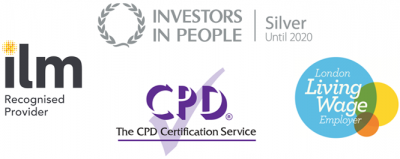Apr
01
2015
Wellbeing at work: creating a happy workplace
By Sally Pearman.
Productivity, employee voice and happiness in the workplace are hot topics for employers today. But in an increasingly global and virtual workplace what can we do to ensure that our staff feel engaged, happy and valued in the workplace? I spoke with some of our facilitators, reviewed the CIPD and NHS advice and looked at my own experiences to pull together some top tips on creating a happy workplace.
Firstly think beyond happiness
Although being happy is obviously important, it can be more powerful to think about wellbeing at work. This expands beyond happiness to consider physical and mental balance and support. Feeling confident, valued, happy, engaged and connected to people around you. Feeling that you have balance in your life and that the time you spend at work is just one part of your life. Feeling healthy both physically and mentally and knowing that your organisation cares about its employees.
Get wellbeing on the table
Many organisations talk about wellbeing schemes in annual reports and in the board room and yet their managers will send non-urgent emails late into the night. This contradictory behaviour is quite common as wellbeing is laced in-between so many aspects of working life: the way we communicate, set targets, give feedback and even the food in the canteen. Not calling staff over the weekend might be anchored in a HR policy, at a manager’s discretion, within internal communications, different rules apply to different teams, or there are no guidelines… And it’s this ambiguity that means that sometimes best intentions fall through the gaps.
HR has a real opportunity to work collaboratively across the whole organisation to make sure that happiness and wellbeing are considered throughout all functions of the business. And there’s some great advice from the CIPD on their website.
Ask the experts: your employees
As well as looking to the NHS, CIPD and legal advice don’t forget to ask your employees. Whether through satisfaction surveys, focus groups, suggestions, part of an away day, or a Dragon Den style wellbeing funding pot – get your employees involved with the process. Get their views on what the organisation is doing well and areas that need work (it’s easy to focus on the doom and gloom!).
Create an anonymous space so staff can feed in their views without being identified. Consider having ambassadors or wellbeing representatives across all departments, hubs or functions. The experience of a financial analyst in Telford might be different to a PA in Cardiff so getting a range of voices is important. In the same vein try to ensure part-time, remote and job share roles are included in the conversation. Try to think about who doesn’t usually engage with these types of conversations. Is it that new staff feel they can’t speak up, or security staff don’t feel their views are as valued as the office staff? Try to create a communications channel that will work for them.
Don’t chase best practice; create something that works for your organisation
Just because the business next door started a running club and installed two showers doesn’t mean that’s what your employees are looking for. Sometimes it’s easy to confuse a physical change with a cultural one and trust me it’s the culture shift that’s going to have the lasting impact. And that will only come about by listening to, and involving your employees.
Motivation and wellbeing can be impacted by things going wrong, as well as right, so try and keep an open mind when thinking about what wellbeing activities might include: flexible working opportunities, sabbaticals, effective delegation, subsidised workshops, office refurbishments, bike racks, learning, management support, annual leave, volunteering, challenging projects, strategic involvement, mindfulness classes, nursery provision, networking, staff room facilities, better lighting, better lunches!
Be transparent and communicate what you’re doing
Keep employees up to date with the project - let them know when it’s started, when they’ll be involved and the results of their feedback. There’s nothing more demotivating than being asked your view and then having it ignored. So keep staff in the loop. Use blogs, social media, your intranet or simply a notice board (we use a chalk board which works really well!).
Often with projects like this there’s a big ‘mapping’ phase in which feedback is analysed and work is done around improving policies and procedures. If this is happening let people know! This internal work may appear less glamourous than new investments but it will have the biggest impact. Likewise, if your budget is limited don’t be afraid to share this with the staff and talk about what’s being done with this year’s budget and what is planned for future phases. Using a Dragon’s Den style pitching and voting format can be a good way to get staff engaged but also to highlight that not everything can happen at once. And don’t forget that HR time is a significant resource so map that allocation too.
Embed wellbeing
Add wellbeing to your HR strategy, create an update-report for your board or Senior Management Team and aim for wellbeing to be added to the organisation’s strategic plan. If these changes are to stick, wellbeing will need to be reviewed on a cyclical basis to ensure there’s capacity and time set aside for working on this area.
Think about the phases your employees go through from induction (setting expectations) right through to exit interviews (was wellbeing a factor?) and obviously the significant chunk in between!
If you’d like to share any best practice or success stories you’ve had we’d love to hear from you. Please send these over to sally.pearman@the-centre.co.uk


